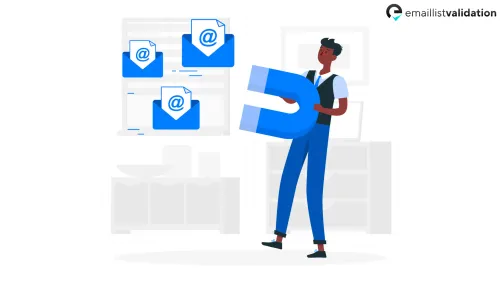Email marketing is an essential part of any modern business strategy. However, it's not just about sending out emails to your subscribers. You need to make sure that your emails are reaching their intended recipients and not bouncing back. Bounced emails can damage your email reputation, increase your bounce rate, and affect your email marketing efforts. That's why it's crucial to learn how to test email for bounce and prevent this issue. In this article, we will guide you through the process of testing email for bounce and answer some of the most commonly asked questions about this topic.
Understanding Email Bounce

Before we dive into the process of testing email for bounce, let's first understand what email bounce is. When you send an email, it goes through various servers and filters to reach its recipient. However, sometimes the email cannot reach its recipient and is returned to the sender. This is known as email bounce.
There are two types of email bounce: hard bounce and soft bounce. A hard bounce occurs when the email is permanently rejected by the recipient's server. This could be due to invalid email address, domain name, or other issues. A soft bounce occurs when the email is temporarily rejected by the recipient's server. This could be due to a full inbox, server downtime, or other issues.
Why Testing Email for Bounce is Important

Testing email for bounce is essential for several reasons. First, it helps you maintain your email reputation. If you have a high bounce rate, it can affect your email deliverability and result in your emails being marked as spam. Second, it helps you identify and remove invalid email addresses from your list. Invalid email addresses can increase your bounce rate and damage your email reputation. Third, it helps you improve your email marketing efforts by ensuring that your emails are reaching their intended recipients.
How to Test Email for Bounce
Now that we understand the importance of testing email for bounce let's discuss how to test email for bounce. There are several ways to test email for bounce, including:
1. Use an Email Verification Service
One of the easiest ways to test email for bounce is to use an email verification service. These services help you verify the validity of email addresses and identify potential bounce issues. Some popular email verification services include NeverBounce, ZeroBounce, and EmailListVerify.
2. Set Up a Test Email Account
Another way to test email for bounce is to set up a test email account. This account should have a fake email address or an email address that is likely to bounce. You can then send test emails to this account and monitor the bounce rate.
3. Use an Email Testing Tool
There are several email testing tools available that can help you test email for bounce. These tools simulate email delivery and identify potential bounce issues. Some popular email testing tools include Postmark, Mailtrap, and Litmus.
4. Monitor Your Email Deliverability
Finally, it's essential to monitor your email deliverability regularly. This includes checking your bounce rate, open rate, click-through rate, and other metrics. By monitoring your email deliverability, you can identify potential bounce issues and take corrective action.
Frequently Asked Questions
Q: What is a bounce rate in email marketing?
A: Bounce rate in email marketing refers to the percentage of emails that are returned to the sender because they cannot be delivered.
Q: Why do emails bounce back?
A: Emails can bounce back for several reasons, including invalid email address, full inbox, server downtime, and other issues.
Q: How can I reduce my bounce rate?
A: You can reduce your bounce rate by verifying email addresses, removing invalid email addresses from your list, and monitoring your email deliverability regularly.
Q: What is an email verification service?
A: An email verification service helps you verify the validity of email addresses and identify potential bounce issues.
Q: How often should I test email for bounce?
A: You should test email for bounce regularly, ideally after every email campaign or at least once a month.
Conclusion
Testing email for bounce is essential for maintaining your email reputation, identifying and removing invalid email addresses, and improving your email marketing efforts. There are several ways to test email for bounce, including using an email verification service, setting up a test email account, using an email testing tool, and monitoring your email deliverability. By testing email for bounce regularly, you can ensure that your emails are reaching their intended recipients and achieving their desired results.



